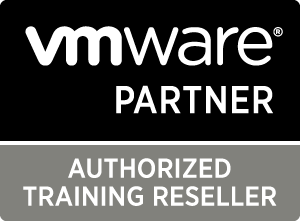VMware vSAN: Deploy and Manage plus VMware vSAN: Troubleshooting Workshop [V6.7]
Price
No price found.
Duration
5 Days
Modality
Live Online
Course code
EDU-VSANDMTS67-OE

Price
No price found.
Duration
5 Days
Modality
Live Online
Course code
EDU-VSANDMTS67-OE

In this five-day course, you will focus on deploying and managing a software-defined storage solution with VMware vSAN 6.7. You will learn how vSAN functions as an important component in the VMware software-defined data center. You will gain practical experience with vSAN concepts and troubleshooting methodology and diagnostic tools through the completion of hands-on lab exercises.
By the end of the course, you should be able to meet the following objectives:
Storage and virtual infrastructure administrators who want to use software-defined storage with vSAN.
This course requires completion of one of the following prerequisites:
Experience working at the command line is helpful.
The course material presumes that a student can perform the following tasks with no assistance or guidance before enrolling in this course:
If you cannot complete all of these tasks, VMware recommends that you complete the VMware vSphere: Install, Configure, Manage [V6.x] course before enrolling in VMware vSAN: Deploy and Manage.
Storage and virtual infrastructure administrators who want to use software-defined storage with vSAN.
This course requires completion of one of the following prerequisites:
Experience working at the command line is helpful.
The course material presumes that a student can perform the following tasks with no assistance or guidance before enrolling in this course:
If you cannot complete all of these tasks, VMware recommends that you complete the VMware vSphere: Install, Configure, Manage [V6.x] course before enrolling in VMware vSAN: Deploy and Manage.
Module Breakdown - For a course module breakdown click here
Course Introduction
Introduction to vSAN
vSAN Configuration
vSAN Policies and Virtual Machines
Managing and Operating vSAN
Stretched Clusters and Two-Node Clusters
Monitoring and Troubleshooting vSAN
vSAN Software Architecture
Troubleshooting Methodology
Troubleshooting Tools